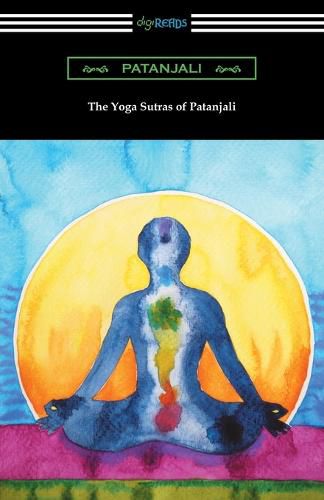Readings Newsletter
Become a Readings Member to make your shopping experience even easier.
Sign in or sign up for free!
You’re not far away from qualifying for FREE standard shipping within Australia
You’ve qualified for FREE standard shipping within Australia
The cart is loading…






This title is printed to order. This book may have been self-published. If so, we cannot guarantee the quality of the content. In the main most books will have gone through the editing process however some may not. We therefore suggest that you be aware of this before ordering this book. If in doubt check either the author or publisher’s details as we are unable to accept any returns unless they are faulty. Please contact us if you have any questions.
Yoga is an exercise and meditation philosophy that has been taking the United States by storm over the past several decades. Yet many are unaware that there is an entire, ancient religion that prefaces this phenomenon. Yoga is one of six orthodox schools of Hindu philosophy, and the Yoga Sutras of Patanjali contains 196 aphorisms that form the basis of Raja Yoga. Patanjali uses his text to explain different facets of the philosophy, leading people to achieve Kaivalya, the ultimate goal of detachment. The sutras begin with the most basic concentration, and then progresses to discipline, manifestation, and finally, emancipation of the transcendental ego. Patanjali also explains how one can find the path to Kaivayla with the eight limbs of Yoga; non-violent thoughts, cleanliness, healthy living, meditation, and others are explained as essential actions to achieving self-liberation. Patanjali lived sometime between the 1st century BCE and the 5th century BCE. While all critics agree that Patanjali is the great compiler of the Yoga Sutras, many deliberate about whether or not he created the meditational philosophy. Some even speculate that Patanjali borrowed some of his sutras from other authors. Regardless, the Yoga Sutras of Patanjali is now considered to be one of the most important textual sources for the practice of yoga. This edition is printed on premium acid-free paper and is translated with a preface by William Q. Judge.
$9.00 standard shipping within Australia
FREE standard shipping within Australia for orders over $100.00
Express & International shipping calculated at checkout
This title is printed to order. This book may have been self-published. If so, we cannot guarantee the quality of the content. In the main most books will have gone through the editing process however some may not. We therefore suggest that you be aware of this before ordering this book. If in doubt check either the author or publisher’s details as we are unable to accept any returns unless they are faulty. Please contact us if you have any questions.
Yoga is an exercise and meditation philosophy that has been taking the United States by storm over the past several decades. Yet many are unaware that there is an entire, ancient religion that prefaces this phenomenon. Yoga is one of six orthodox schools of Hindu philosophy, and the Yoga Sutras of Patanjali contains 196 aphorisms that form the basis of Raja Yoga. Patanjali uses his text to explain different facets of the philosophy, leading people to achieve Kaivalya, the ultimate goal of detachment. The sutras begin with the most basic concentration, and then progresses to discipline, manifestation, and finally, emancipation of the transcendental ego. Patanjali also explains how one can find the path to Kaivayla with the eight limbs of Yoga; non-violent thoughts, cleanliness, healthy living, meditation, and others are explained as essential actions to achieving self-liberation. Patanjali lived sometime between the 1st century BCE and the 5th century BCE. While all critics agree that Patanjali is the great compiler of the Yoga Sutras, many deliberate about whether or not he created the meditational philosophy. Some even speculate that Patanjali borrowed some of his sutras from other authors. Regardless, the Yoga Sutras of Patanjali is now considered to be one of the most important textual sources for the practice of yoga. This edition is printed on premium acid-free paper and is translated with a preface by William Q. Judge.